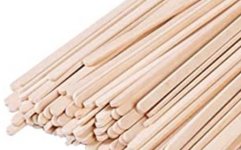stvrowe
Member
- Joined
- Jan 27, 2007
- Messages
- 834
I don't post on forums very often as I don't want to be seen as hawking my Youtube channel but I do need your help to answer a question. I have recently started 3D printing tools/accessories for my shop and one of those items was a set of glue nozzles for the Domino DF500. The concept/design has proven solid to me but, this version needs some printing enhancements to provide a better seal at the bottle interface. I am already working on the next version to address this issue. 3D printing this set takes over 20 hours so it is not efficient for mass production and I have no desire to spend my retirement years operating a 3D print farm.
Yesterday, I posted a video with a link where folks could download STL files so they could print them. The video can be seen here: DF500 Domino Glue Nozzles
Not everyone has or even wants a 3D printer so one viewer suggested contacting FastCap to see if they would be interested in manufacturing Domino glue nozzles. Over the past 12 hours or so, there have been a number of communications with FastCap on this subject and the bottom line question is whether there is sufficient market demand to justify manufacturing setup to make glue nozzles for the Domino. Such a setup would cost somewhere between $30-50K before FastCap ever made a penny and that would require a lot of sales to justify. To gauge market demand, the question I need you to answer is:
Should FastCap develop a Domino glue nozzle product?
Thanks,
Steve
Yesterday, I posted a video with a link where folks could download STL files so they could print them. The video can be seen here: DF500 Domino Glue Nozzles
Not everyone has or even wants a 3D printer so one viewer suggested contacting FastCap to see if they would be interested in manufacturing Domino glue nozzles. Over the past 12 hours or so, there have been a number of communications with FastCap on this subject and the bottom line question is whether there is sufficient market demand to justify manufacturing setup to make glue nozzles for the Domino. Such a setup would cost somewhere between $30-50K before FastCap ever made a penny and that would require a lot of sales to justify. To gauge market demand, the question I need you to answer is:
Should FastCap develop a Domino glue nozzle product?
Thanks,
Steve


